VW ID Buzz: Everything we know so far
Here's everything we know about the VW ID Buzz electric van right now
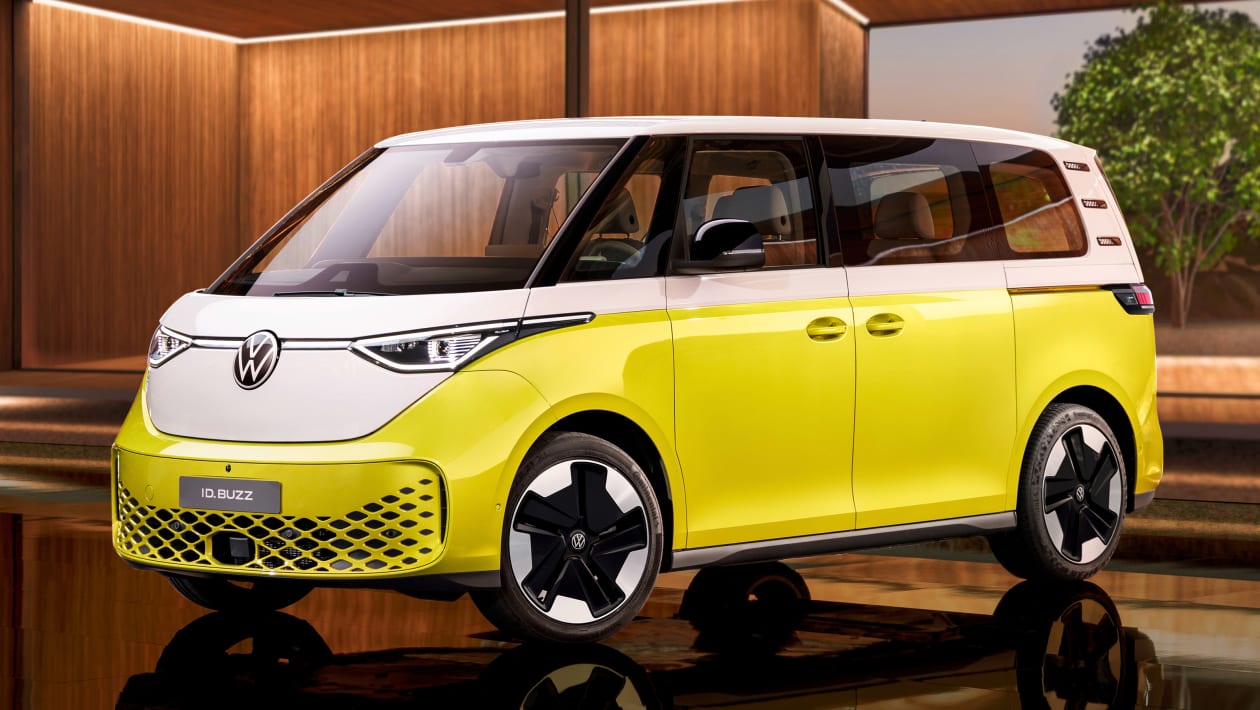
Release Date: October 2022 (U.K.), 2023 (U.S.)
Price: From €64,581 (est), U.S. price TBA
Power: RWD / AWD (200-300 hp)
Battery Range: 250 miles (Est)
0-60 mph: 8.5 seconds
Smarts: VW Travel Assist, eventual Level 4 autonomy planned
The VW ID Buzz is coming, and Volkswagen hopes its iconic van will attract a lot of attention as it gets reinvented for the EV era.
The ID Buzz is expected to hit the U.S. in 2023, and VW claims the electric vehicle could be fully autonomous by 2025, which is pretty exciting. You can also expect a roomy interior, high-tech cockpit and seating for up to 5 to 7 adults.
What we’ve seen so far looks like the original VW van got abducted by aliens, given a full pulp sci-fi makeover, and then dropped back on Earth nearly 60 years later. While the van is still a way from release, and the details are a little scarce, here’s what we know so far.
VW ID Buzz pricing and availability
We don’t have an exact release date for the VW ID Buzz just yet, but Volkswagen has confirmed that it will be going on sale in Europe in late 2022. U.K. sales were expected to open in late May, with deliveries scheduled for sometime in October, but that doesn't seem to have happened yet.
The North American variant will then go on sale in the U.S. in 2023.
Multiple variants of the van going on sale. Both Europe and the U.S. appear to be getting commercial variants for services like product delivery, called the ID Buzz Cargo.
The only pricing information we have right now is from Germany, with the ID.Buzz starting at €64,581. That works out to $68,861 when converted to U.S. dollars, but we can expect the van to cost noticeably less on account of the German price including the 19% tax rate. Sources speaking to CNET Cars claim that the van will start at $55,000 in the United States.
Sign up to get the BEST of Tom's Guide direct to your inbox.
Get instant access to breaking news, the hottest reviews, great deals and helpful tips.
Europe will also get a six seat model with all passengers facing forwards, with information screens in the seat in front. The U.S. model will also get a passenger model, but layout will be different since two of the rear seats will be facing the rear of the van.
VW ID Buzz: Performance and range
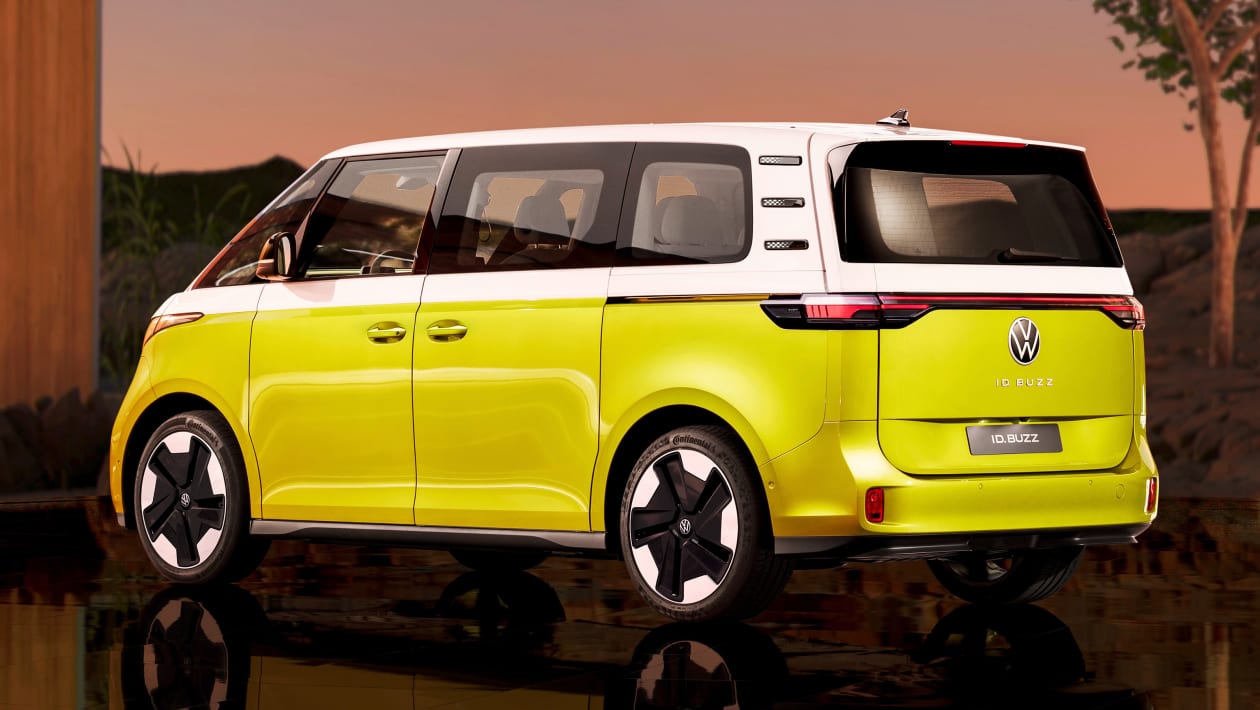
There are two ID Buzz models confirmed right now. One is set to come with rear-wheel drive and 200 horsepower, and the other with all-wheel drive and 300 horsepower.
According to VW that power means the van manages a 0-62mph speed of 8.5 seconds, and a top speed of 90mph. It is a van, after all, and it was never going to have Tesla Model S levels of performance — though this is still fairly impressive for a vehicle of this shape.
Range figures have yet to be confirmed, but VW has hinted at a WLTP range of 250 miles. That's per the European testing standard, and the U.S.-approved EPA testing cycle will no doubt be a little more conservative.
The ID Buzz will have a 77 kWh battery as standard. That battery is a concealed inside the floor structure, which will be a boost to the interior space. Where charging is concerned, the battery can handle up to 22 kW AC charging and 170 kW DC rapid charging. The van supports bidirectional charging as well, should you have a compatible wallbox charger at home.
VW ID Buzz design
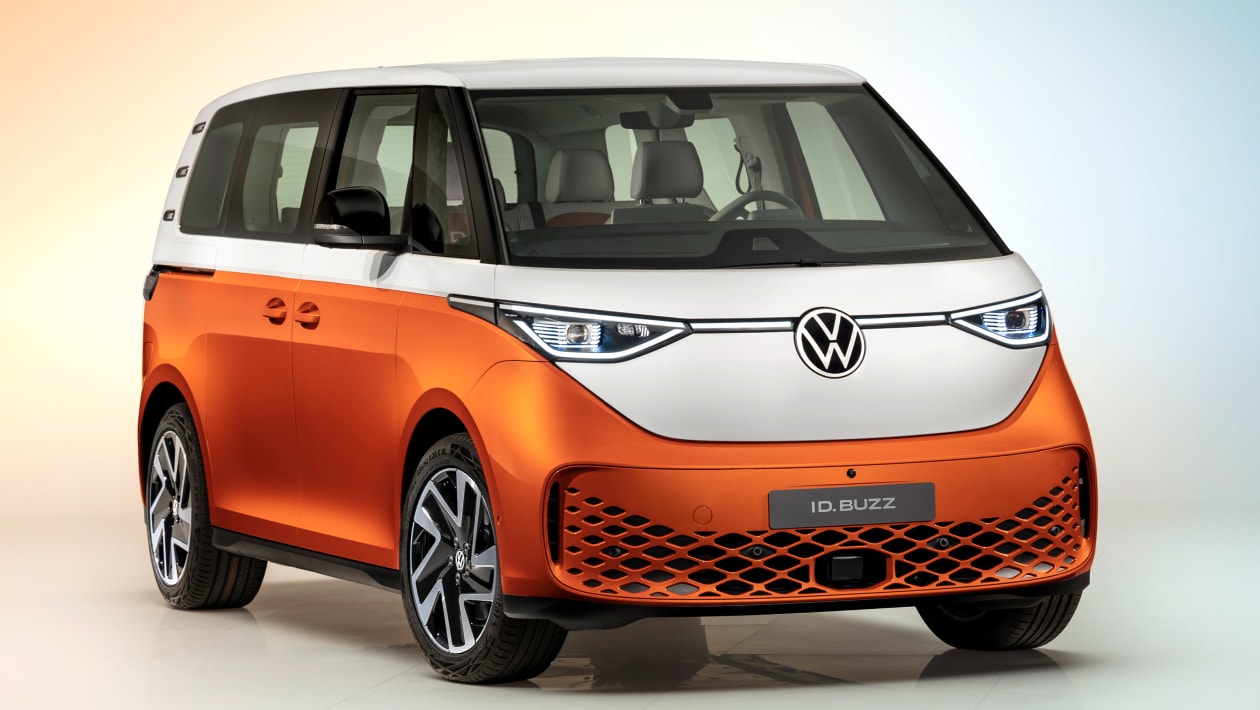
The passenger iteration of the VW ID Buzz looks reminiscent of the classic VW vans of the past — albeit with a few design choices that suggest VW is trying a little too hard to make it look futuristic.
But the basics are there, with the two-tone color scheme, the slide open doors, and plenty of interior space for your trips to the beach, the woods or wherever else you might go.
VW has confirmed that you will get 39.5 cubic feet of trunk space, and that's without having to fold down the rear seats. In other words this van is a pretty spacious machine.
On top of that there are two glass panels in the roof, one over the driver and passenger, and a second larger panel over the rear seats. The van also comes equipped with LED headlights and a very large VW logo — just in case you forgot who made it.
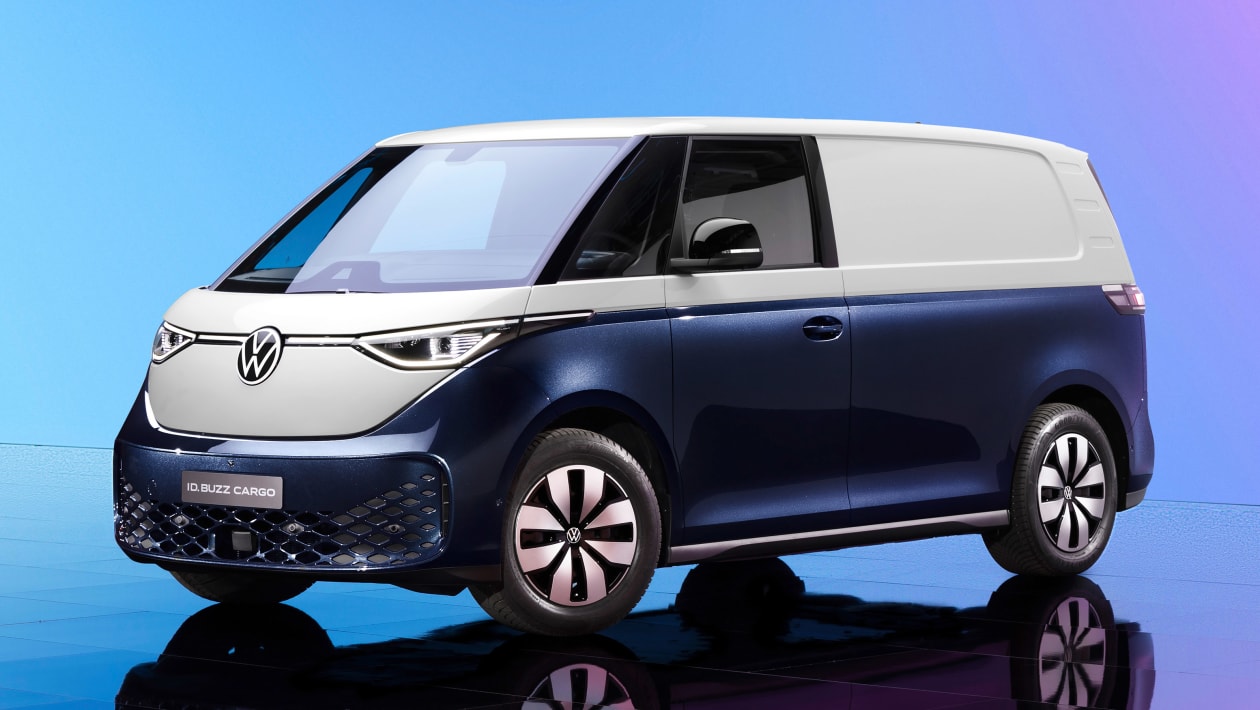
The Cargo variant is a little different, and the design has been altered accordingly. So think of the regular ID Buzz crossed with a Ford Transit van, and you get the idea.
The cabin is mostly the same, but the entire rear of the van is sealed off, with room for cargo. According to VW's imagery there's room for two pallets in there, which should be ample room for small scale hauling work.
VW ID Buzz interior and features
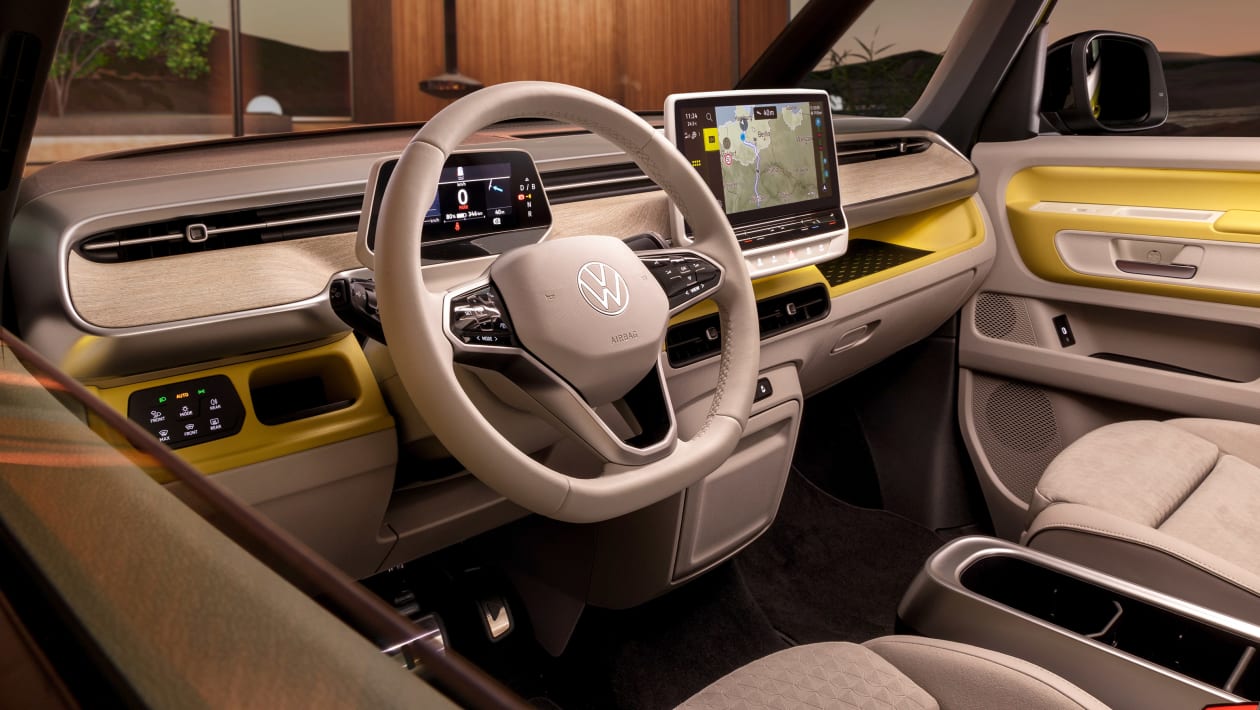
Inside the VW ID Buzz is, naturally, pretty spacious. That’s the word VW has been using, and based on what we've seen it's hard to disagree.
Initially the van will only be available in a five-seat variant, which means ample space in the trunk. 39.5 cubic feet, in fact, which can be extended to 77.8 cubic feet if you fold the rear seats down. It's not the largest EV out there, the Tesla Model X has 91 cubic feet of cargo space, but it's pretty darn high.
VW also says that there will be an option to raise the cargo floor, allowing owners to turn the rear into a bed. Sadly the standard model isn't completely flat in the back, which may make trying to sleep a little uncomfortable.
A seven seat model is also set to launch sometime next year, but details are scant right now.
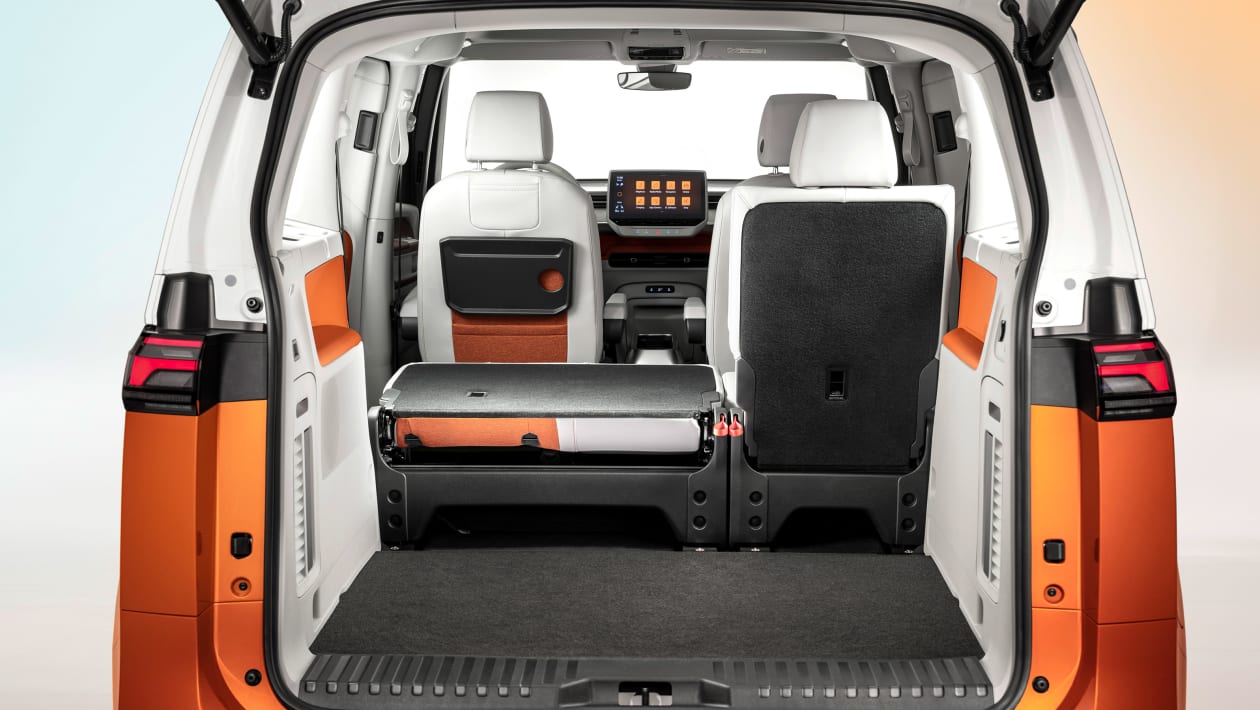
The dashboard comes complete with a 5.3-inch digital instrument cluster behind the wheel, alongside a 10-inch infotainment display. However it sounds like a 12-inch option will also be available.
The ID Buzz prototype featured a steering column that looked like it was inspired by tesla's controversial Yoke steering wheel. However the production model has opted for a standard wheel-shape, complete with a lever-controlled gear selector.
The van has a fairly minimalist approach overall, though VW hasn't done away with all the buttons. Still it's a lot sparser than some cars on the market, suggesting that a lot of the car's functions will be controlled by the touchscreen — something we've never been a huge fan of.
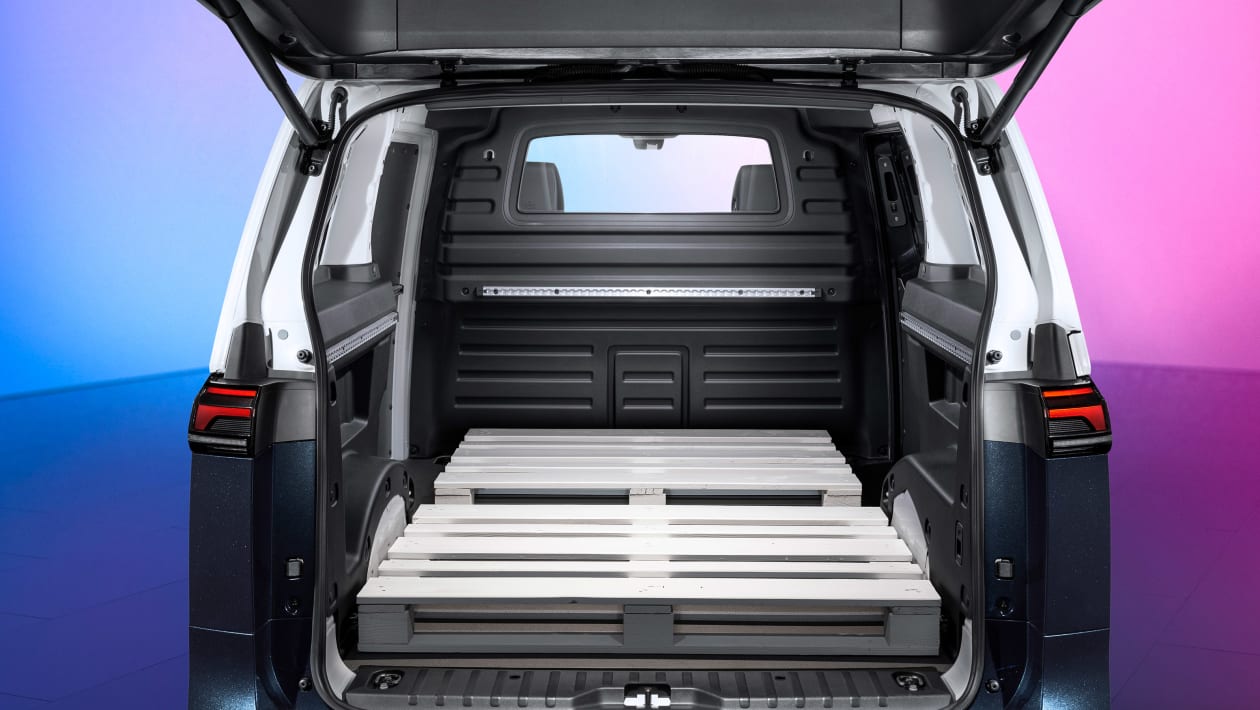
From a seat perspective it looks like VW has opted for a comfortable-looking setup — though the real standout feature is the fact both front seats have their own arm rests. Whether they will be useful, or are going to just get in your way, is up to you to decide.
The cabin will also come with ample storage space, with a dashboard compartment that folds down to reveal two large cup holders and large storage compartments in each door. The center console has also been renamed the "Buzz Box" and features multiple pods with both a bottle opener and an ice scraper. Though we wouldn't recommend trying to use both at the same time.
Like the Genesis GV60 that center console doesn't stretch to the very front of the van, offering a more spacious feel than you might be used to.
VW had also promised an augmented reality heads up display, which was designed to project directions directly onto the road in front of you. However this doesn't seem to have appeared in the production model just yet, and might not have made the final cut.
VW ID Buzz autonomy
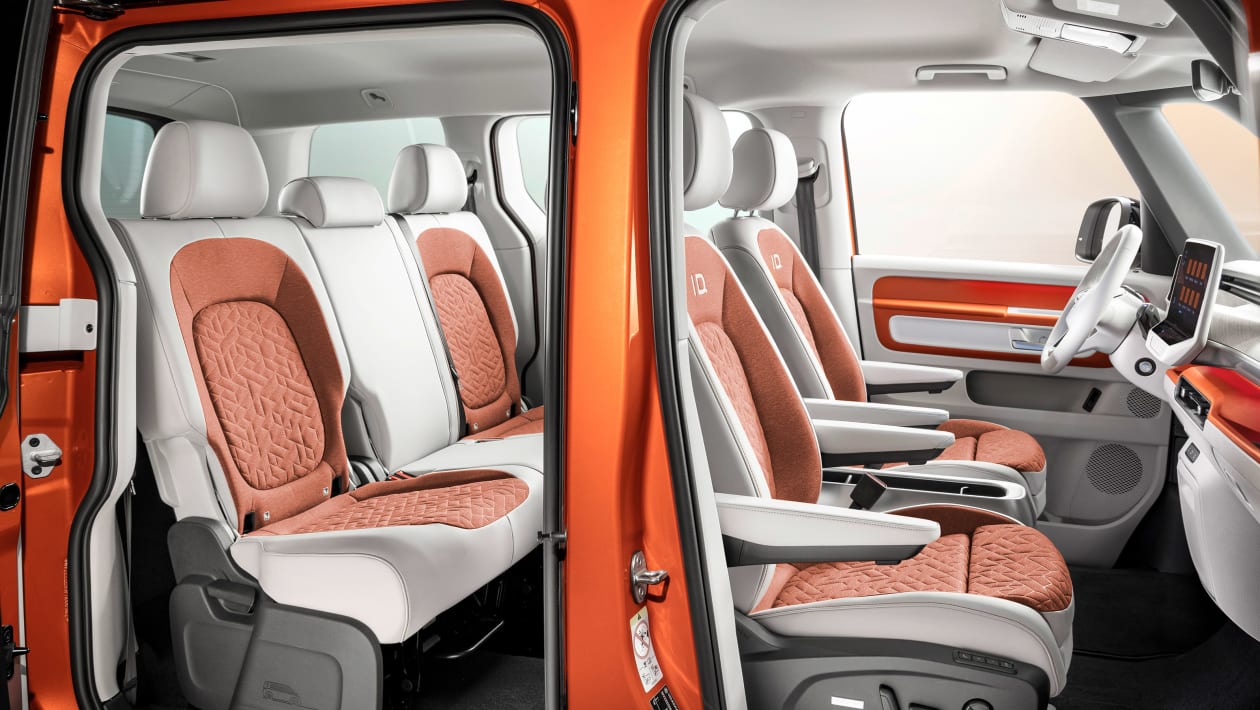
There is no such thing yet as a fully autonomous car, not one that you’ll see on public roads anyway. There are six levels of automobile autonomy, as set out by the Society of Automotive Engineers, ranging from level 0 (zero autonomy whatsoever) to Level 5 (zero driver input at any time). Right now most cars are in Level 1 or 2, though there are a very small number of level 3 autonomous cars on sale in parts of the world.
Apparently, VW wants to get the ID Buzz out on the roads with level 4 automation by 2025. Level 4 means that, for all intents and purposes, the car is driving itself around independently. However, there may still be instances where a human driver needs to intervene, and manually override the autonomous controls.
The idea is that the ID Buzz’s different variants should, in theory, be able to ferry around people and goods by itself in just three years time. Which is obviously a very big deal, especially given how many times automakers have been consistently promising grand advances in autonomy that never quite live up to expectations.
Whether VW can actually deliver or not is another matter. What we know about the production ID Buzz is that, at launch, the car will have limited driver assistance features in the form of VW's Travel Assist software — which is a mix of adaptive cruise control and lane keep assistance. The ID Buzz also offers automated lane change software at speeds up to 56mph.
VW ID Buzz outlook
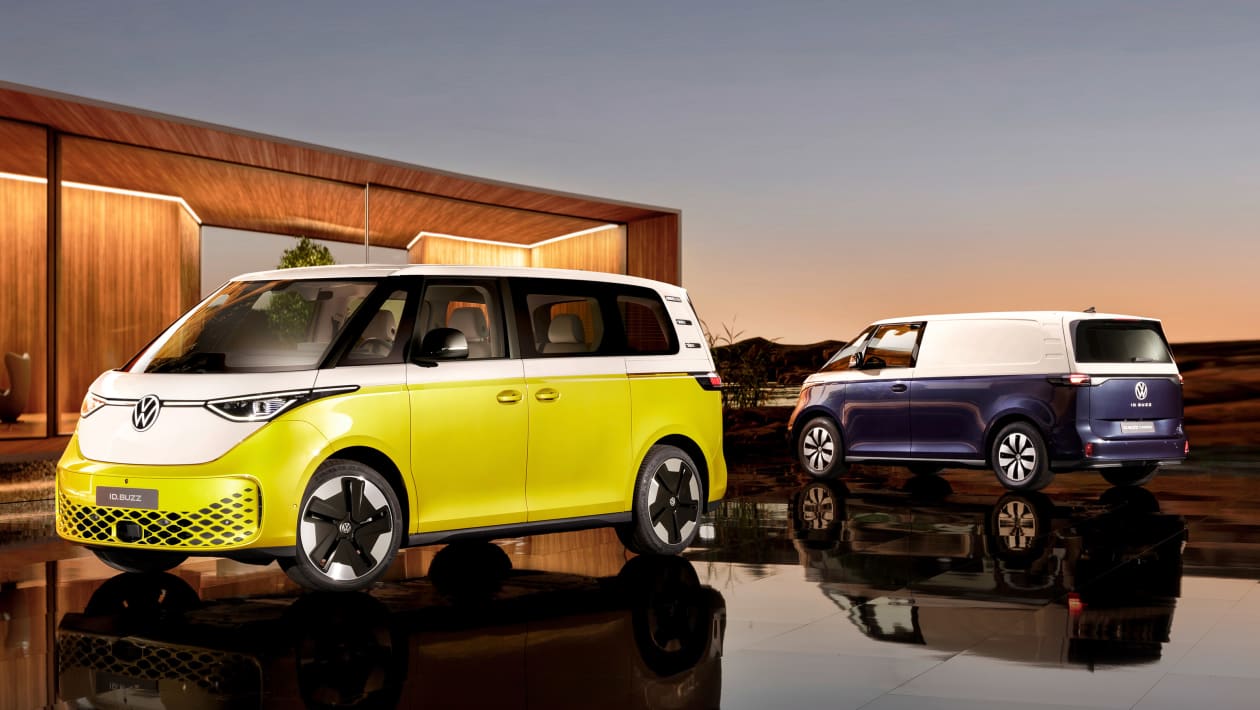
It's clear that VW want to make sure the ID Buzz is more than just an electrified version of its classic van. But it's still a very ambitious project, and we'll have to wait and see whether the German automaker can actually pull off the many advances it's trying to achieve by 2025.
Then again, even without fancy features like Level 4 autonomy, or the weirdly-trapezoidal steering wheel, it'll be interesting to see what the ID Buzz will have to offer. The only downside right now is that the vehicle only exists in concept and prototype form, so we can't actually analyze important stats like range. So only time will tell.

Tom is the Tom's Guide's UK Phones Editor, tackling the latest smartphone news and vocally expressing his opinions about upcoming features or changes. It's long way from his days as editor of Gizmodo UK, when pretty much everything was on the table. He’s usually found trying to squeeze another giant Lego set onto the shelf, draining very large cups of coffee, or complaining about how terrible his Smart TV is.
